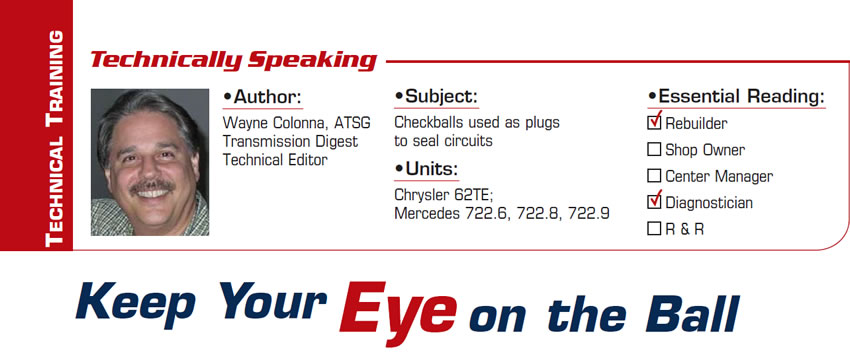Shift Pointers: Failures caused by incorrect tire sizes
For years ATSG has produced a wide range of issues related to improper tire sizes on vehicles. Even under-inflated tires have been known to cause issues. Problems such as premature failure with an active 4WD transfer case will occur with incorrect tire sizes. Additional issues include the following: As a result of some of these

Mercedes-Benz 722.9 no forward movement after overhaul
The complaint A 2007 Mercedes-Benz CLS550 with the 722.9 transmission has an after-overhaul complaint of no forward movement. The cause The B2 Brake Housing inner apply piston was installed upside down—refer to the image above, left. The correction The B2 Brake inner apply piston was re-installed in the correct position, after which forward movement returned,
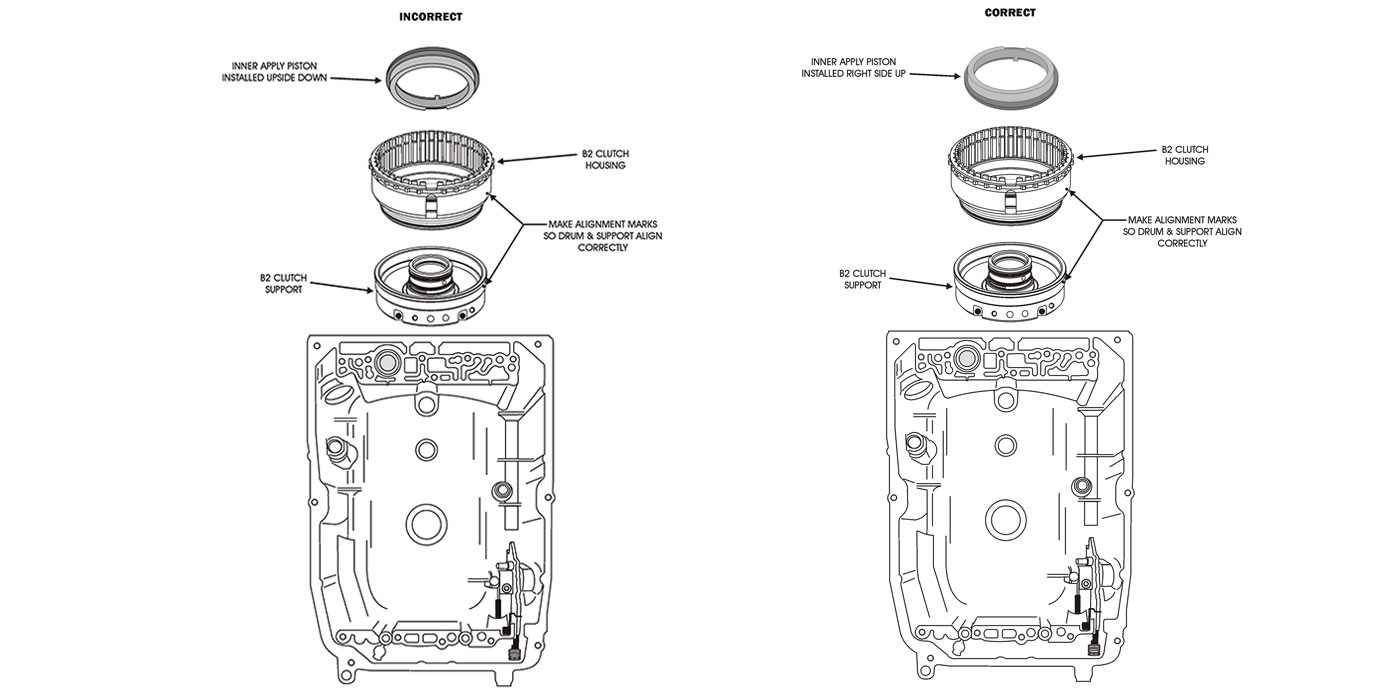
Alto introduces Mercedes 722.9 friction clutches
Alto has introduced a new line of friction clutches for Mercedes 722.9 Speedshift MCT 7 Speed transmissions. The one-sided clutches are made for model years 2008 and on, and feature Alto’s G3 friction material. Pictured above are the 1-sided friction external teeth; one-sided friction internal teeth, and the steel pressure plate.
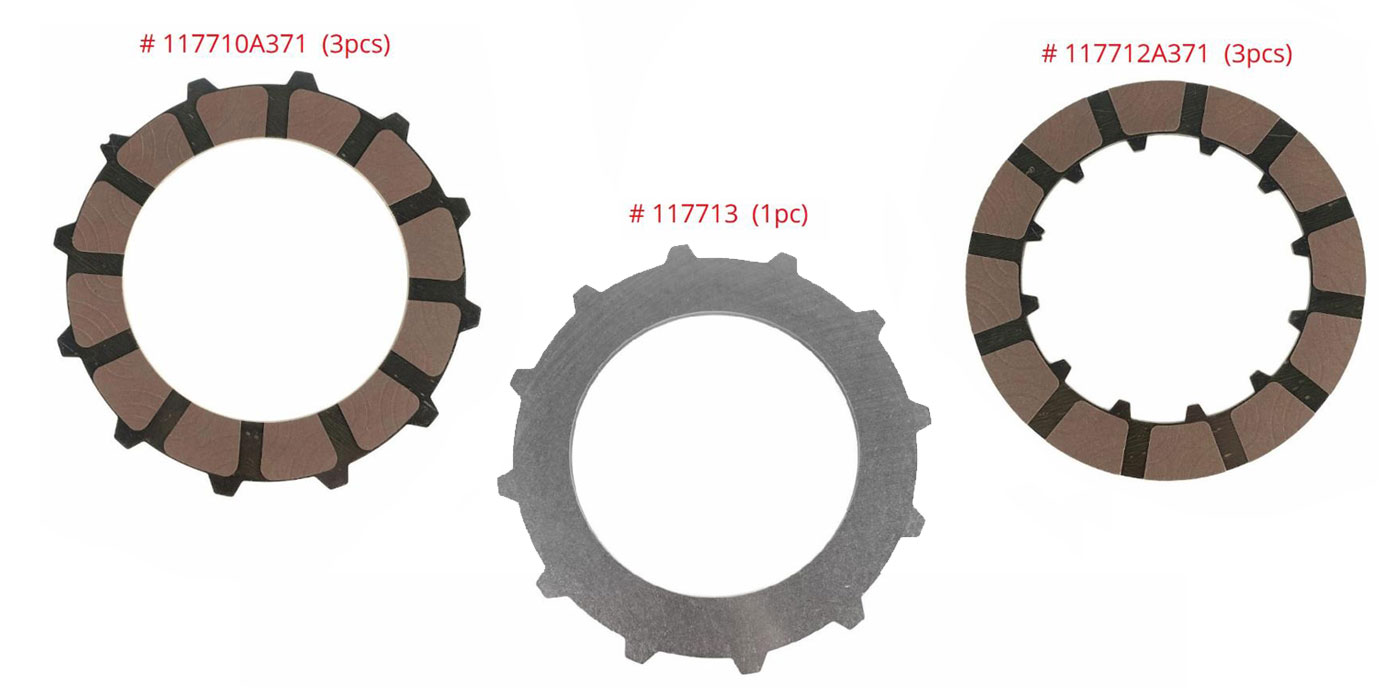
Alto introduces friction clutches for Mercedes 722.9 transmission
Alto has introduced a new line of friction clutches for the Mercedes 722.9 (Speedshift MCT seven-speed). The clutches cover model years 2008 and on, and feature Alto’s G3 high-performance friction material. There are two varieties; you can find full specs for # 117710A371 here, and for # 117712A371 here.
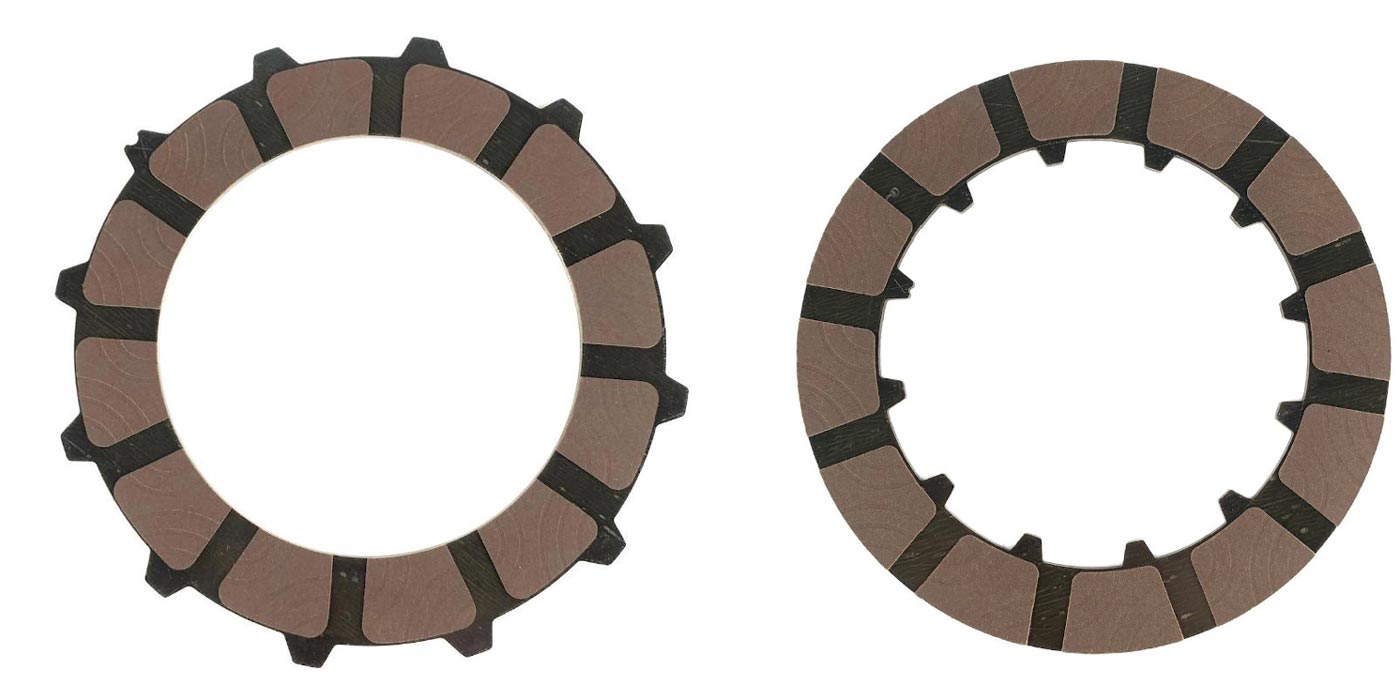
722.9 Pump Failure
A common and well-known failure with the 722.9 transmission is the way the pump bushing seizes to the converter neck (Figure 1).
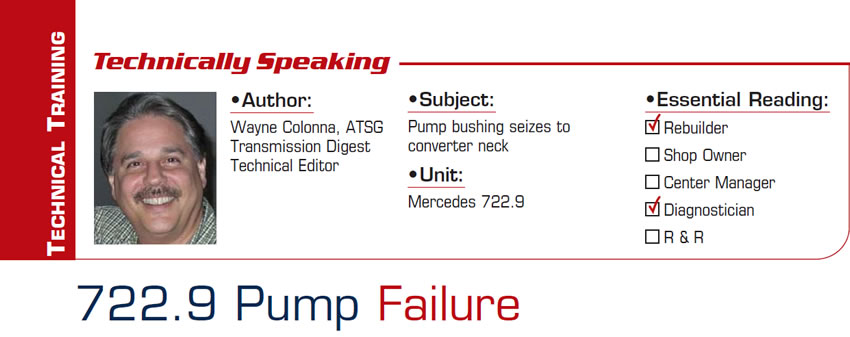
Keep Your Eye on the Ball
If you have had the opportunity to work on a 62TE transmission, you may have noticed nine checkballs in tapered pockets that are held into place with C clips (Figure 1). In our seminars we explained that these balls are used during an assembly-line check with a special tool that pressurizes their respective circuits. Once the tool is removed these balls become plugs. Apparently this procedure was more economical when compared with the cost of providing typical pressure taps. But what this means to you is that these balls must be checked to ensure that they are in their location and that they are sealing. Otherwise you could be fighting a variety of different complaints.
